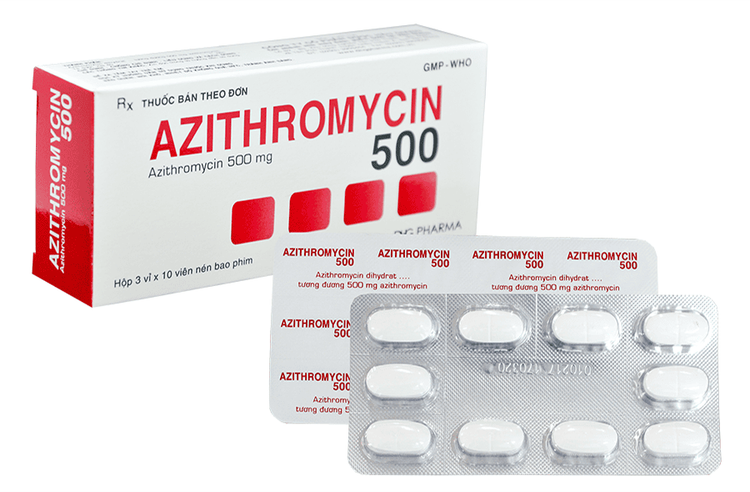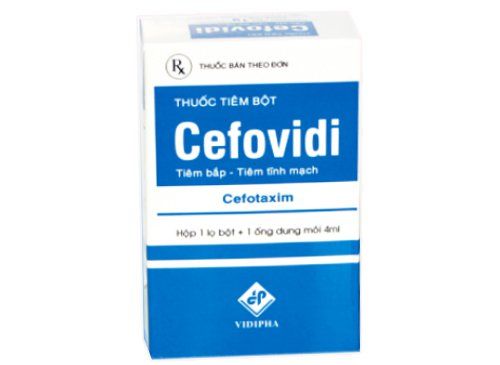This is an automatically translated article.
The misuse of antibiotics leaves very dangerous consequences for patients and the health industry. With incomplete information about antibiotics, including macrolide drugs with many different brand names, it causes difficulties for users.
1. What are macrolide antibiotics?
Macrolide is a group of antibiotics with a lactone ring of 12 to 17 carbon atoms or is used in treatment with the drug name erythromycin. Currently, on the market, this group of drugs has a lot of very popular oral brand names that are often indicated for the treatment of respiratory tract infections (pneumonia, bronchitis), skin and soft tissue infections...
Classification according to chemical structure characteristics, Macrolide antibiotics can be divided into 3 groups:
Chain structure of 14 carbon atoms: Erythromycin, Oleandomycin, Roxithromycin, Clarithromycin, Diritromycin. 15-carbon structure: Azithromycin. 16-carbon structure: Spiramycin, Josamycin. The natural origin used to prepare macrolides is mainly from the culture of streptomyces bacteria. As for the semi-synthetic antibiotics, the manufacturers took from natural macrolides and changed some substituents to overcome the disadvantages of the original macrolides such as roxithromycin, clarithromycin, azithromycin... Derived from erythromycin, when By changing the substituents, it is possible to create products that are more stable in acidic media, improve bioavailability (increasing absorption through the small intestine) and broaden the spectrum of action against bacteria.

Macrolid là nhóm thuốc kháng sinh thường dùng để điều trị nhiễm khuẩn đường hô hấp
Macrolid mainly focuses on some strains of Gram-positive bacteria and some atypical bacteria (Clostridium Perfringens, Corynebacterium Diphtheriae, Listeria Monocytogenes).
The drug has no effect on most strains of Gram-negative bacilli in the intestine and only has a weak effect on some other strains of Gram-negative bacteria such as H. influenzae and N. meningitidis. However, it is an antibacterial drug. quite good on strains of N. Gonorrhoeae.
Macrolide group also has good antibacterial effect on intracellular bacteria such as Campylobacter jejuni, M. Pneumoniae, Legionella Pneumophila, C. Trachomatis, Mycobacteria (including M. Scrofulaceum, M. kansasii, M. Avium-Intracellulare – extrinsic) except M. Fortuitum).
Macrolide antibiotics are well distributed in tissues, especially bone and bronchial fluid. For bacteria that are already resistant to penicillin, macrolides are the antibiotic of choice to replace them. The most commonly used form of medicine is tablets and capsules for oral administration. The injectable form is for hospital use only. Attention should be paid to the potential for drug interactions, especially with antihistamines.
2. What are the macrolide antibiotics?
The first drug in the macrolide group is erythromycin, because of the short half-life of erythromycin, it must be taken several times a day. Therefore, the introduction of semi-synthetic macrolides has overcome this drawback. Erythromycin is used to treat respiratory diseases, diphtheria, pneumonia in children caused by atypical bacteria, neonatal conjunctivitis, used as an alternative to penicillin.
Roxithromycin (rulid): Treatment of diphtheria, whooping cough, pneumonia caused by Mycoplasma and legionella. Clarithromycin: Currently also very popular in combination with amoxicillin and metronidazole in the treatment regimen of peptic ulcers caused by Helicobacter Pylori (in addition to a proton pump inhibitor such as omeprazole). In addition, clarithromycin is also used to treat AIDS patients. Spiramycin (rovamycin): The drug tolerates acidic environments, is not toxic to the liver, and has a long half-life (6 - 8 hours). Currently on the market, there is a combination form with metronidazole (rodogyl) used to treat anaerobic infections, or used in oral and maxillofacial infections. Medicines used to treat infections of the respiratory tract, skin, and genitals. Azithromycin (zithromax): The drug penetrates heavily into tissues (except cerebrospinal fluid). The drug has a very broad spectrum of action and a long half-life (more than 70 hours) so it only needs to be taken once a day and 3 days in a course of treatment. Azithromycin is used to treat diseases caused by Legionella pneumophila, secondary syphilis, malaria, cholera, Lyme.

Azithromycin có phổ tác dụng rất rộng và thời gian bán thải dài
3. Do macrolide antibiotics have side effects?
The most common side effects of this group of antibiotics are on the gastrointestinal tract: nausea, vomiting, abdominal pain, diarrhea (when taken orally), thrombophlebitis (when administered intravenously). In particular, this group of antibiotics is strongly metabolized by the liver, so it can cause hepatitis or cholestasis. Other side effects such as skin allergy (skin rash, rash) or anaphylaxis have also been reported with this group of antibiotics.No matter what health problems you have, when you are prescribed antibiotics, you need to be very careful, choose a reputable medical examination and treatment facility and especially do not abuse drugs to avoid antibiotic resistance.
Any questions that need to be answered by a specialist doctor as well as customers who need to be examined and treated at Vinmec International General Hospital, please book an appointment on the website for the best service.
Please dial HOTLINE for more information or register for an appointment HERE. Download MyVinmec app to make appointments faster and to manage your bookings easily.













